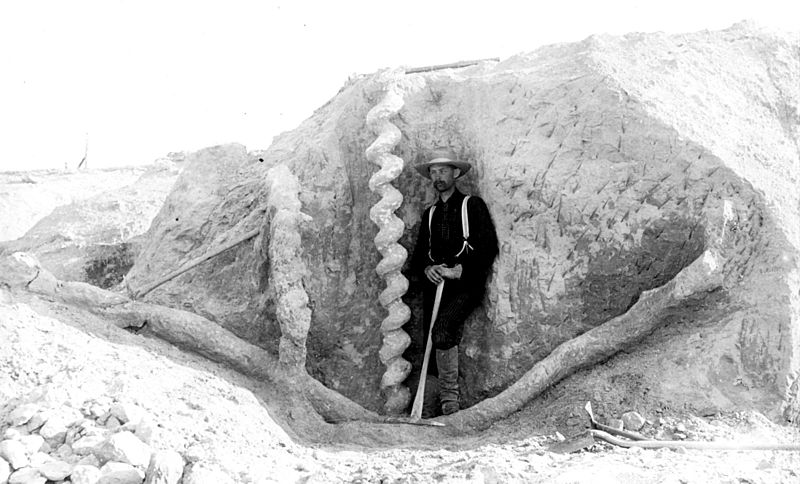Image: Daemonelix burrows, Agate Fossil Beds

Description: Daemonelix burrows, Miocene of Nebraska, USA (original vintage photo owned by the University of Nebraska; photo provided here, for geoscience education purposes, courtesy of Agate Fossil Beds National Monument). Daemonelix burrows are commonly called “Devil’s corkscrews”. These distinctive, large, spiral burrows were made by an ancient species of terrestrial beaver. The spiraled portion of these trace fossils is usually about 1.5 to 2 meters tall. The base of the spiraled portion merges with a subhorizontal tube. The burrows are filled with siliciclastic sediments that are better cemented compared with surrounding materials. Stratigraphy: paleosol in the Harrison Formation, upper Middle Miocene Locality: Agate Fossil Beds National Monument, northwestern Nebraska, USA Trace fossils are any indirect evidence of ancient life. They refer to features in rocks that do not represent parts of the body of a once-living organism. Traces include footprints, tracks, trails, burrows, borings, and bitemarks. Body fossils provide information about the morphology of ancient organisms, while trace fossils provide information about the behavior of ancient life forms. Interpreting trace fossils and determination of the identity of a trace maker can be straightforward (for example, a dinosaur footprint represents walking behavior) or not. Sediments that have trace fossils are said to be bioturbated. Burrowed textures in sedimentary rocks are referred to as bioturbation. Trace fossils have scientific names assigned to them, in the same style & manner as living organisms or body fossils.
Title: Daemonelix burrows, Agate Fossil Beds
Credit: Daemonelix burrows (Harrison Formation, Middle Miocene; Agate Fossil Beds National Monument, northwestern Nebraska, USA)
Author: James St. John
Usage Terms: Public domain
License: Public domain
Attribution Required?: No
Image usage
The following page links to this image:

